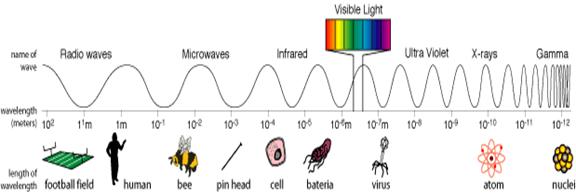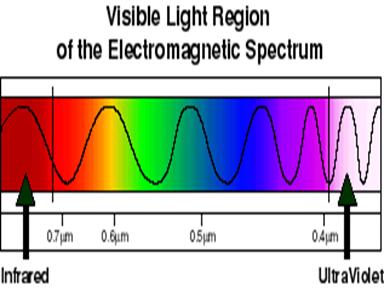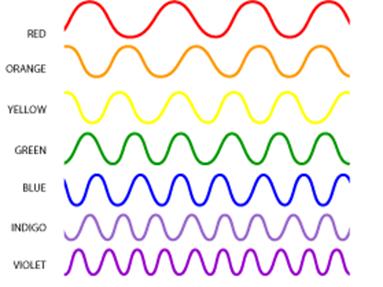Victoria A. Raucci
All light, whether it can be seen or not, travels in waves. The human eye can only see light in the "visible light" part of the electromagnetic spectrum. In the visible light section, the light waves are not too long to be seen, such as radio waves, or the waves are not too short, such as gamma rays. See figure 3 below for where visible light falls on the electromagnetic spectrum:

Figure 3 – Light Waves of the Electromagnetic Spectrum
http://science.hq.nasa.gov/kids/imagers/ems/waves3.html
The colors of visible light fall in the "Goldilocks" section of the spectrum; the waves are just the right length to be captured by our eyes. Within the visible light section, each color has its own wavelength (see figures 4 and 5 below). Red has the longest wavelength and violet has the shortest wavelength. When all the waves are seen together, they make white light.


Figure 4: The wavelengths of the individual colors in the visible light part of the electromagnetic spectrum.
http://science.hq.nasa.gov/kids/imagers/ems/visible.html
Basically, light is a type of energy that is ultimately created by movement. Some forms of light cannot be seen by the human eye, and those that can be seen fall in the "visible light spectrum".
As stated previously, a teacher can model the questioning for the traveling of light to explore new possibilities. We can tell students the speed of light is approximately186,000 miles per second, and explain that the nearest star besides the sun is about four light-years away from Earth, but other than saying "Wow!", how can we use that knowledge for the greater good? The teacher can ask students to think about why we might want to travel outside our solar system and how we can make that happen.